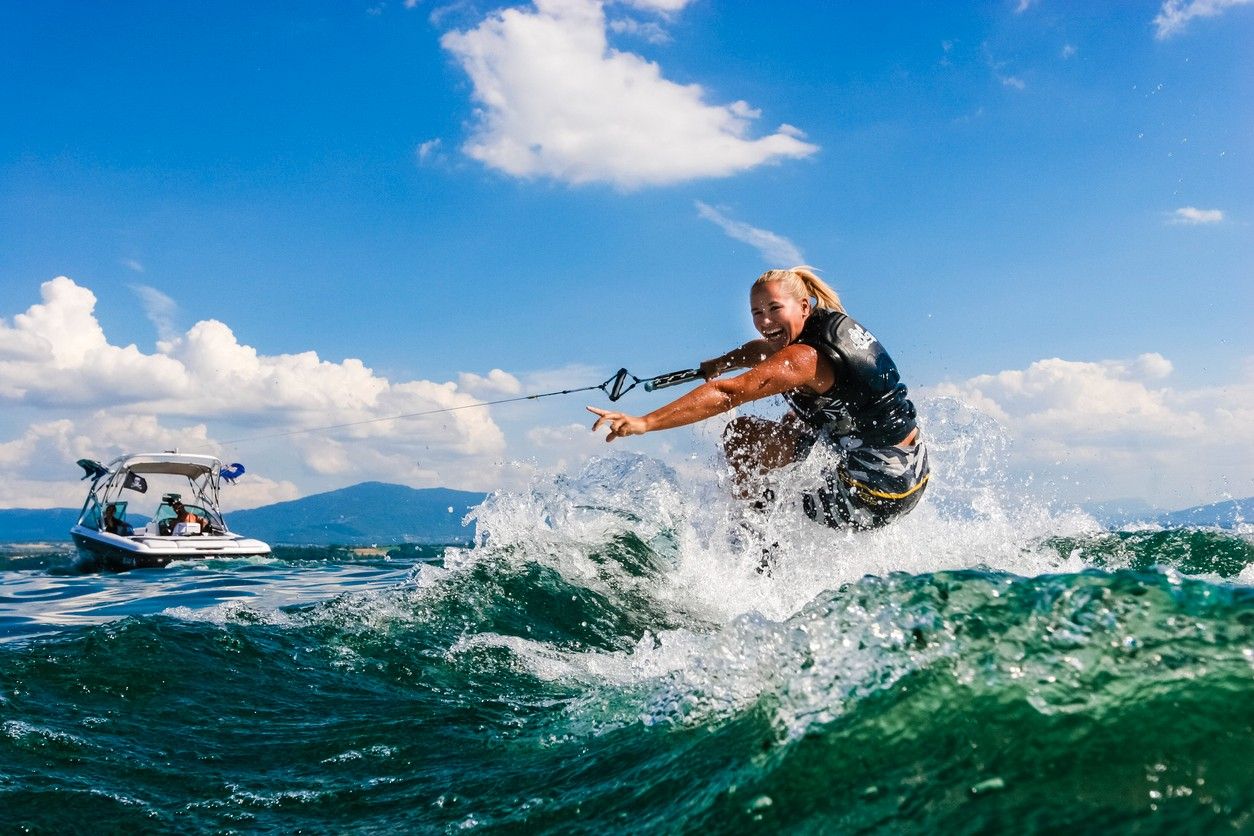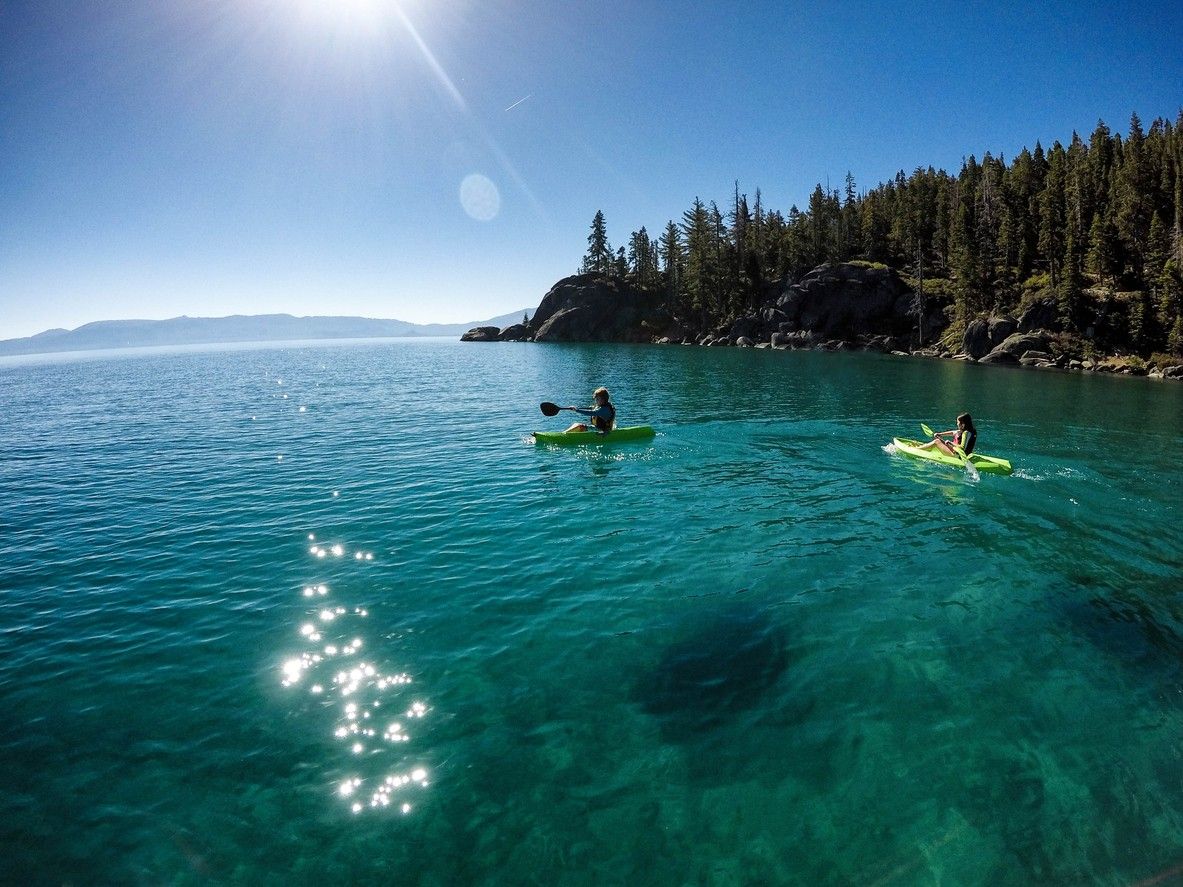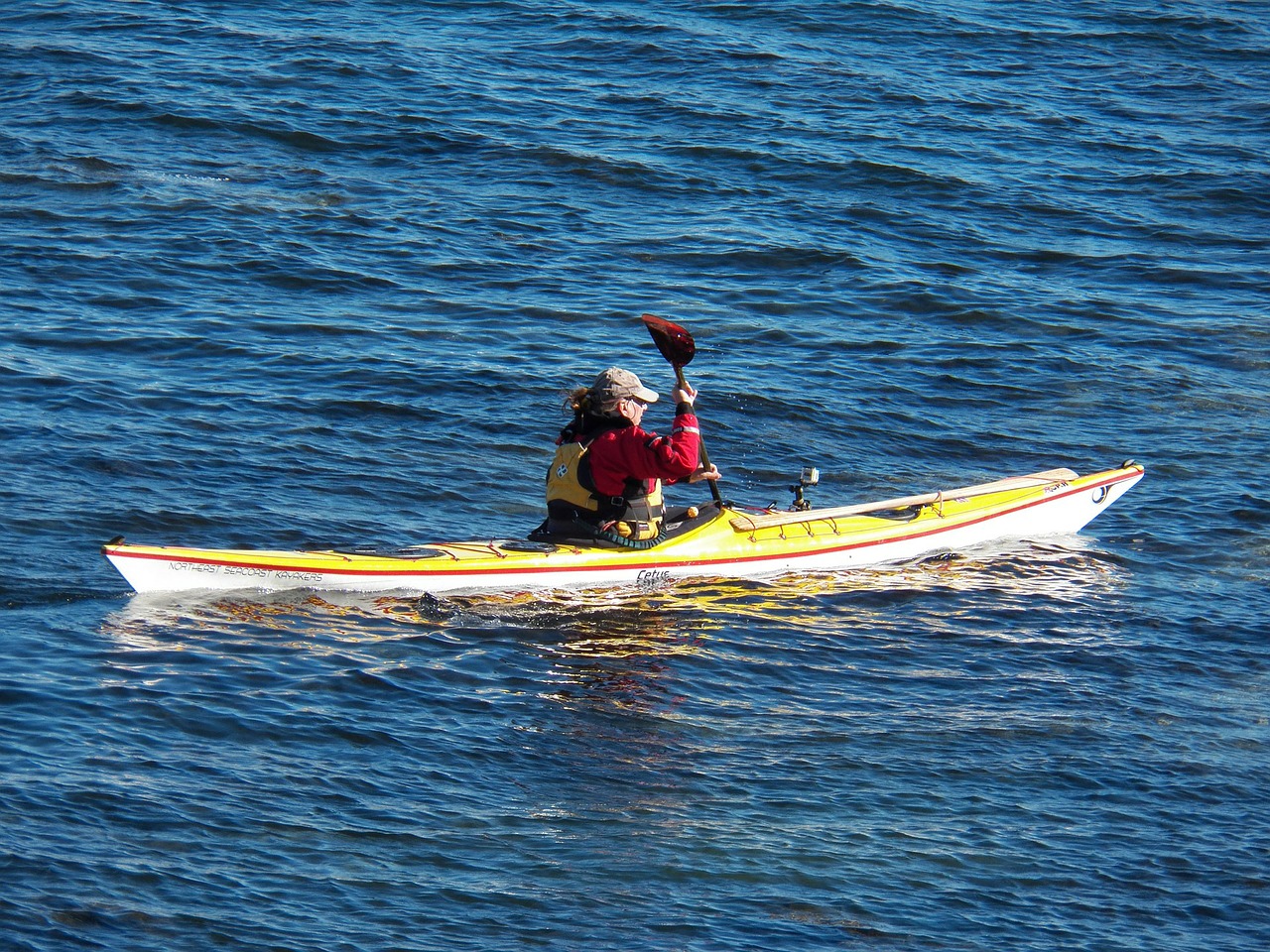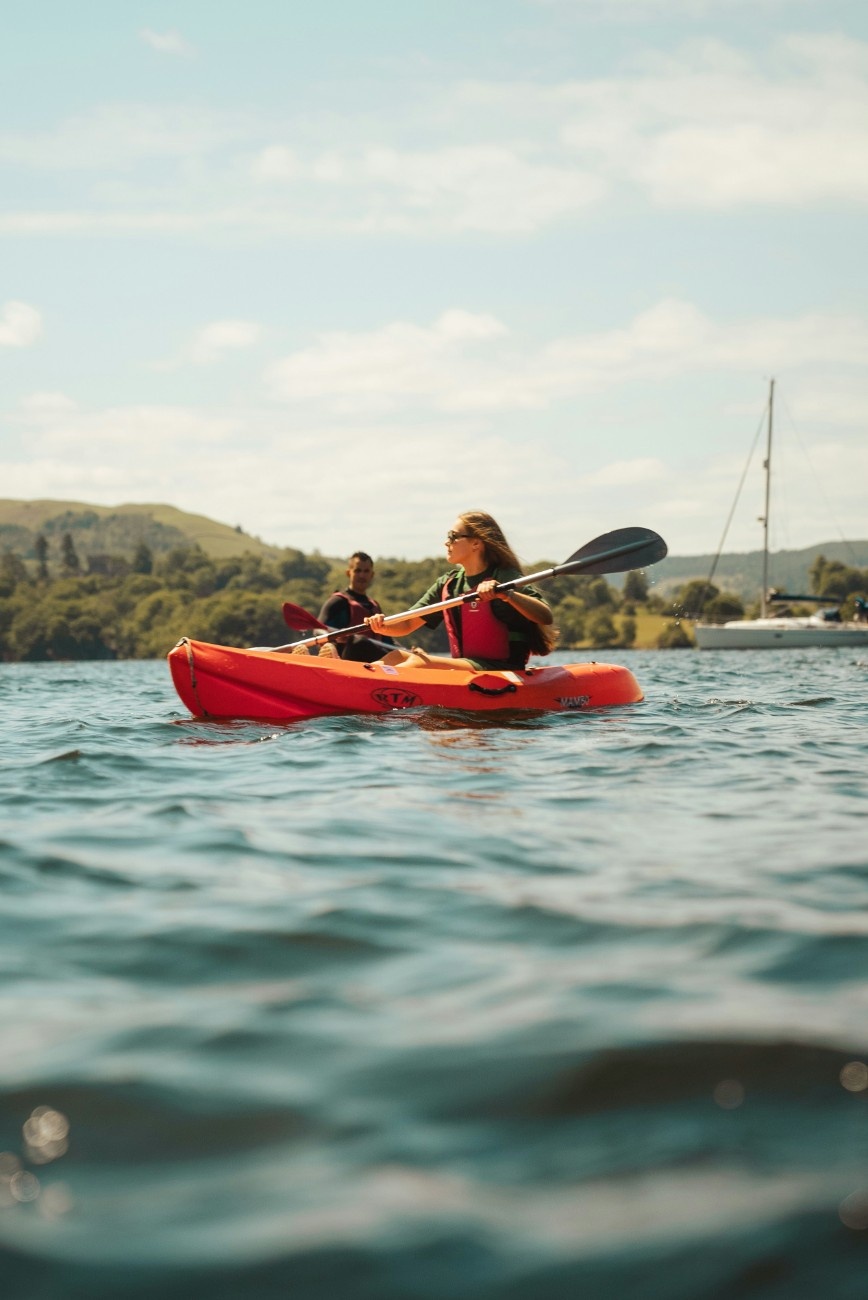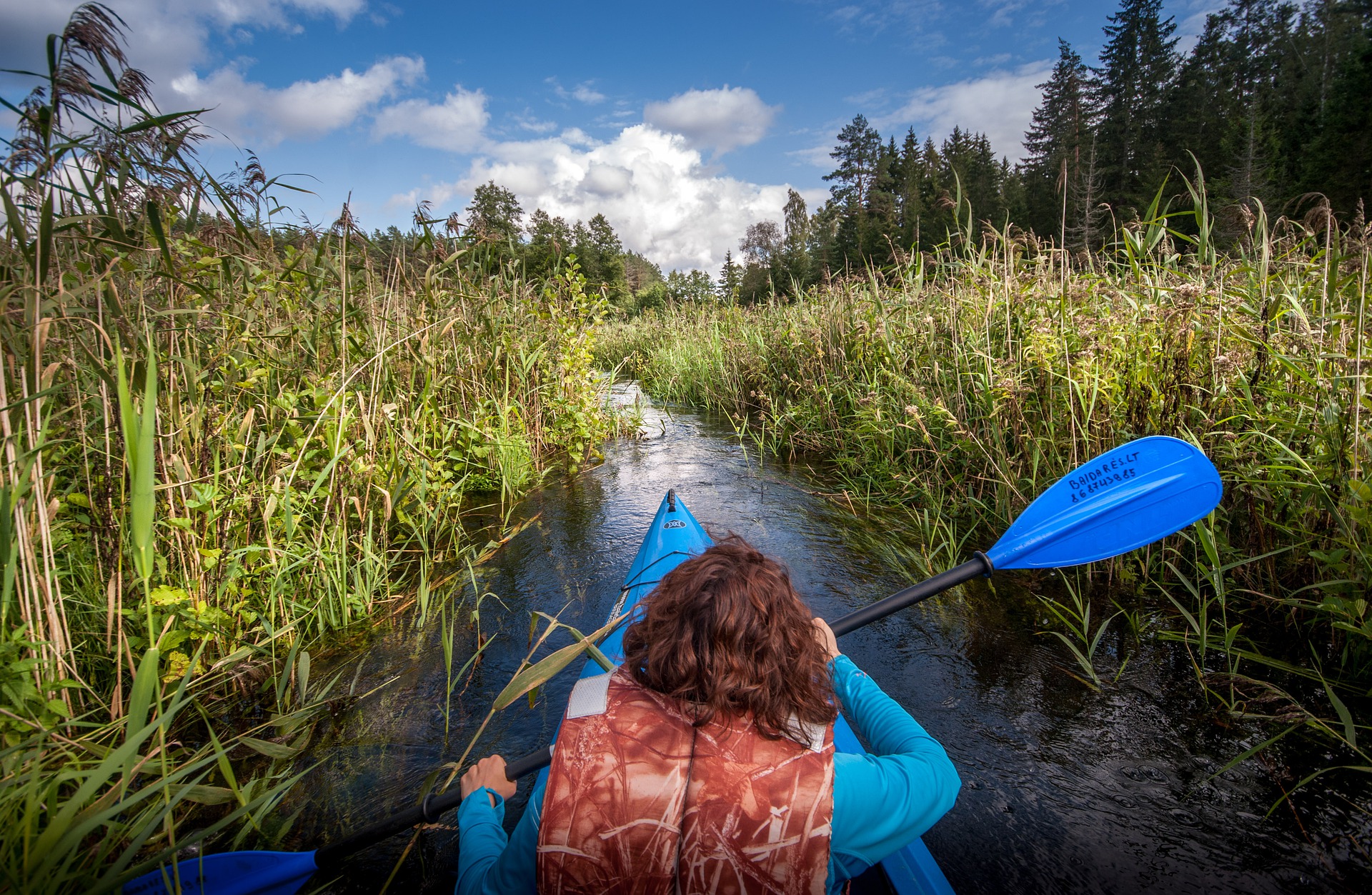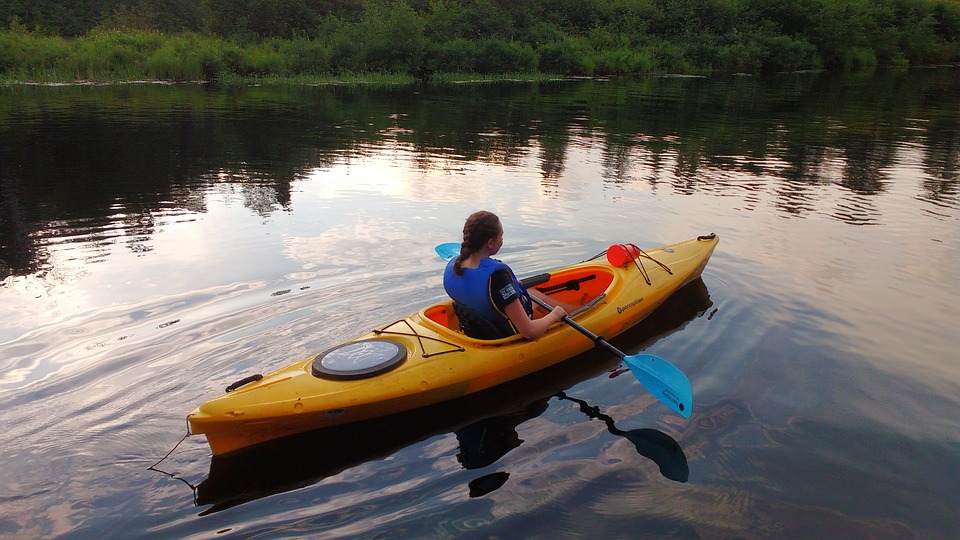Kayaking has exploded in popularity in recent years, attracting outdoor enthusiasts of all ages and skill levels to explore the world's waterways. From serene lakes and winding rivers to coastal waters and challenging whitewater rapids, kayaking offers a diverse range of experiences for those seeking adventure, relaxation, or a unique way to connect with nature. Whether you're a beginner looking to dip your toes into the world of paddling or an experienced kayaker seeking thrilling new challenges, the versatility of kayaks allows you to tailor your experience to your preferences and skill level. The origins of kayaking can be traced back to the Inuit people of the Arctic region, who used kayaks for hunting and transportation. These traditional kayaks were made from animal skins stretched over a wooden frame and were designed to be fast, silent, and manoeuvrable. Today, kayaks are made from a variety of materials such as plastic, fibreglass, and Kevlar, and are used for a wide range of activities from leisurely paddling to competitive racing.
One of the great things about kayaking is that it can be enjoyed by people of all ages and skill levels. It's a low-impact activity that provides a full-body workout, engaging your core, arms, shoulders, and legs. Paddling through the water helps improve cardiovascular fitness, strength, and flexibility. Additionally, being surrounded by nature and enjoying the tranquillity of the water can help reduce stress, promote relaxation, and boost mental well-being Kayaking is also a great way to explore new places and experience the outdoors from a unique perspective. Whether you're paddling through a scenic gorge, navigating a winding river, or exploring a rugged coastline, kayaking allows you to access areas that may be difficult to reach by foot or boat. It's an opportunity to observe wildlife, discover hidden beaches, and connect with the natural world in a way that few other activities can offer.
Essential Equipment
To get started with kayaking, you'll need a few essential pieces of equipment. Here's a list of the basic gear you'll need:
Kayak — The most important piece of equipment is, of course, the kayak itself. As mentioned earlier, there are several types of kayaks to choose from, depending on your skill level and the type of water you'll be paddling in. It's important to choose a kayak that fits your body size and weight, as well as one that is suitable for the conditions you'll be paddling in.
Paddle — A kayak paddle is a double-bladed paddle that is used to propel the kayak through the water. Paddles come in different lengths and materials, such as aluminium, fibreglass, and carbon fibre. When choosing a paddle, consider factors such as your height, the width of your kayak, and your paddling style.
Life jacket — A life jacket, also known as a personal flotation device (PFD), is an essential piece of safety equipment that should be worn at all times while kayaking. It provides buoyancy in case you capsize or fall into the water, helping to keep you afloat until you can get back into your kayak or swim to shore. Make sure to choose a life jacket that fits properly and is designed for kayaking.
Spray skirt — A spray skirt is a waterproof cover that attaches to the cockpit of a sit-inside kayak, preventing water from entering the kayak. It is particularly useful in rough water conditions or when paddling in cold weather, as it helps keep the paddler dry and warm.
Dry bag — A dry bag is a waterproof bag that is used to store gear and supplies that you want to keep dry, such as extra clothing, food, and electronics. Dry bags come in various sizes and can be secured to the kayak using bungee cords or straps.
Bilge pump — A bilge pump is a small hand pump that is used to remove water from the kayak in case of leaks or waves splashing over the sides. It is an essential piece of safety equipment, particularly for sit-inside kayaks.
Helmet — If you plan on paddling in whitewater or other challenging conditions, a helmet is a must-have piece of safety equipment. It protects your head from rocks, branches, and other hazards that you may encounter while paddling.
Other optional but recommended gear includes:
Paddling gloves — Paddling gloves can help prevent blisters and provide grip on the paddle, particularly in cold or wet conditions.
Sunscreen and hat — Protecting your skin from the sun is important while kayaking, as the water can reflect and intensify the sun's rays. Wear a hat and apply sunscreen with a high SPF rating to prevent sunburn and skin damage.
Water shoes or sandals — Wearing shoes or sandals that can get wet and provide good traction on slippery surfaces is important for getting in and out of the kayak and walking on shore.
Whistle — A whistle is a small but important piece of safety equipment that can be used to signal for help in case of an emergency.
Navigation tools — If you plan on paddling in unfamiliar waters, it's a good idea to bring navigation tools such as a map, compass, or GPS device.
By having the right equipment and gear, you can ensure a safe and enjoyable kayaking experience. Remember to always check your equipment before setting out and replace any worn or damaged items as needed.
Types of Kayaks
There are several types of kayaks available in the market, each designed for specific purposes and water conditions. Here are some of the most common types of kayaks:
Sit-on-top kayaks — These kayaks have an open deck and are popular among beginners and recreational paddlers. They are easy to get in and out of and provide ample storage space for gear and supplies. Sit-on-top kayaks are also self-bailing, meaning that any water that enters the kayak will drain out through scupper holes in the bottom.
Inflatable kayaks — These kayaks are made of durable, puncture-resistant materials and can be inflated using a pump. They are lightweight, easy to transport, and can be stored in a small space when deflated. Inflatable kayaks come in a variety of sizes and styles, from solo to tandem, and are suitable for calm waters such as lakes and slow-moving rivers.
Touring kayaks — Also known as sea kayaks, touring kayaks are longer and narrower than recreational kayaks, designed for longer trips and rougher water conditions. They have a covered deck and a small cockpit, which helps keep the paddler dry and protected from the elements. Touring kayaks are more efficient to paddle over long distances and can handle waves and currents better than recreational kayaks.
Whitewater kayaks — These kayaks are shorter and more manoeuvrable than other types of kayaks, designed for navigating fast-moving rivers and rapids. They have a rounded hull and a high-volume deck, which helps them resurface quickly after submerging in turbulent water. Whitewater kayaks come in different shapes and sizes depending on the type of whitewater being paddled, from steep creeks to big water rivers.
Fishing kayaks — These kayaks are designed specifically for fishing and are equipped with features such as rod holders, storage compartments, and anchor systems. They are wider and more stable than other types of kayaks, allowing the angler to cast and reel in fish without tipping over. Some fishing kayaks also have pedal drives or trolling motors for hands-free propulsion.
Sit-on-Top Kayaks
Sit-on-top kayaks are the most popular type of kayak for recreational paddling. They have an open deck design, with the paddler sitting on top of the kayak rather than inside a cockpit. This makes them easy to get in and out of, and they are generally more stable than other types of kayaks. Sit-on-top kayaks are ideal for beginners and casual paddlers who want a simple, user-friendly kayak for exploring calm waters such as lakes, slow-moving rivers, and sheltered bays. They are also popular among anglers, as the open deck provides ample space for fishing gear and allows for easy access to tackle and equipment.
Some key features of sit-on-top kayaks include:
The wide, stable hull design
Self-bailing scupper holes that allow water to drain out of the kayak
Moulded-in seat and footwells for comfort and support
Ample storage space for gear and supplies
Easy to transport and store due to their compact size and lightweight construction
Recreational Kayaks
Recreational kayaks, also known as day touring kayaks, are designed for casual paddling on calm waters such as lakes, slow-moving rivers, and sheltered bays. They are similar to sit-on-top kayaks in terms of stability and ease of use but have a closed cockpit design that provides more protection from the elements. Recreational kayaks are typically shorter and wider than other types of kayaks, which makes them more manoeuvrable and easier to handle for beginners. They often have large, comfortable cockpits with adjustable seats and footrests, as well as ample storage space for gear and supplies.
Some key features of recreational kayaks include:
Stable, forgiving hull design
Large, comfortable cockpit with adjustable seating
Ample storage space for gear and supplies
Lightweight construction for easy transport and storage
Suitable for short to medium-length trips on calm waters
Touring Kayaks
Touring kayaks, also known as sea kayaks, are designed for longer trips and more challenging water conditions such as open water, coastal paddling, and multi-day expeditions. They are longer and narrower than recreational kayaks, which makes them faster and more efficient to paddle over long distances. Touring kayaks typically have a more streamlined hull design with a sharp bow and stern, which helps them cut through waves and currents more easily. They also have a rudder or skeg system for improved tracking and manoeuvrability in windy or choppy conditions.
Some key features of touring kayaks include:
Long, narrow hull design for speed and efficiency
Rudder or skeg system for improved tracking and manoeuvrability
Sealed bulkheads and hatches for dry storage of gear and supplies
Comfortable, adjustable seating with thigh and hip braces for support
Suitable for longer trips and more challenging water conditions
Whitewater Kayaks
Whitewater kayaks are designed for paddling on fast-moving rivers and streams with rapids, rocks, and other obstacles. They are shorter and more manoeuvrable than other types of kayaks, with a rounded hull design that allows them to spin and pivot quickly in turbulent water.
There are several sub-types of whitewater kayaks, each designed for specific types of whitewater paddling:
Playboats — Short, highly manoeuvrable kayaks designed for performing tricks and stunts in river features such as waves and holes.
River runners — Medium-length kayaks designed for running rapids and navigating technical river features. They offer a balance of manoeuvrability and speed.
Creekboats — Longer, higher-volume kayaks designed for running steep, low-volume creeks and rivers with waterfalls and other obstacles. They have more buoyancy and stability than other whitewater kayaks.
Some key features of whitewater kayaks include:
The short, manoeuvrable hull design
Rounded edges and high volume for resurfacing quickly after submerging
Reinforced construction for durability in rough water conditions
Spray skirts to keep water out of the cockpit
Suitable for experienced paddlers with proper safety training and equipment
Inflatable Kayaks
Inflatable kayaks are a popular choice for recreational paddlers who want a lightweight, portable kayak that is easy to store and transport. They are made from durable, puncture-resistant materials such as PVC or Hypalon, and can be inflated using a pump or compressor. Inflatable kayaks come in a variety of styles, from sit-on-top designs to enclosed cockpit models. They are generally wider and more stable than hard-shell kayaks, making them a good choice for beginners or paddlers who want a more relaxed experience.
Some key features of inflatable kayaks include:
Lightweight, portable design that is easy to store and transport
Durable, puncture-resistant construction
Wide, stable hull design for improved stability
Multiple air chambers for safety and buoyancy
Suitable for calm to moderate water conditions
Pedal Kayaks
Pedal kayaks, also known as pedal-drive kayaks, are a relatively new type of kayak that uses a pedal-powered propeller system instead of a traditional paddle. This allows the paddler to propel the kayak using their legs, freeing up their hands for other activities such as fishing or photography.
Pedal kayaks are popular among anglers and recreational paddlers who want a more efficient and hands-free way to move around on the water. They are typically wider and more stable than traditional kayaks, with ample storage space for gear and supplies.
Some key features of pedal kayaks include:
Pedal-powered propeller system for hands-free propulsion
Wide, stable hull design for improved stability
Ample storage space for gear and supplies
Adjustable seating with lumbar support for comfort
Suitable for calm to moderate water conditions
Fishing Kayaks
Fishing kayaks are designed specifically for anglers who want a stable, comfortable platform for fishing on lakes, rivers, and coastal waters. They are typically wider and more stable than other types of kayaks, with features such as rod holders, tackle storage, and anchor systems. Fishing kayaks come in both sit-on-top and sit-inside designs, with some models featuring pedal-drive systems for hands-free propulsion. They often have elevated seating positions for better visibility and casting, as well as ample storage space for gear and supplies.
Some key features of fishing kayaks include:
Wide, stable hull design for improved stability while casting and reeling
Multiple rod holders and tackle storage compartments
Elevated seating position for better visibility and casting
Ample storage space for gear and supplies
Suitable for calm to moderate water conditions
Learning the Basics
Before heading out on the water, it's essential to learn the basic techniques and safety procedures of kayaking. Here are some key things to keep in mind:
Proper paddling technique — Efficient paddling technique involves using your core muscles and torso rotation to generate power, rather than relying solely on your arms. Keep your arms slightly bent and your hands shoulder-width apart on the paddle. Rotate your torso as you paddle, using your abs and back muscles to pull the paddle through the water. Practice good posture, sitting up straight with your feet braced against the foot pegs or bulkhead.
Entering and exiting the kayak — Getting in and out of a kayak can be tricky, particularly if you're new to the sport. When entering the kayak, place one hand on either side of the cockpit and lower yourself into the seat, keeping your weight centred. When exiting, make sure the kayak is stable and close to shore or a dock, then lift yourself out using your arms and core muscles.
Capsize recovery — Knowing what to do in case of a capsize is an essential safety skill. If you do capsize, stay calm and hold onto your kayak and paddle. If you're close to shore, you can swim the kayak to shore and empty the water. If you're in deeper water, you can perform a self-rescue by flipping the kayak back over and climbing back in. It's a good idea to practice capsize recovery in a safe, controlled environment before venturing out on your own.
Signalling for help — In case of an emergency, it's important to know how to signal for help. A whistle is the most common signalling device, as it can be heard from a distance and doesn't rely on technology. Three short blasts on a whistle are the universal signal for distress. Other signalling devices include flares, mirrors, and bright-coloured clothing or gear.
Weather and water conditions — Before setting out, always check the weather forecast and be aware of any potential hazards such as strong winds, thunderstorms, or high waves. It's also important to know the water conditions, including the temperature, currents, and tides. Cold water can be particularly dangerous, as it can quickly lead to hypothermia if you capsize or fall in.
- Local regulations and navigation rules — Familiarise yourself with the local regulations and navigation rules for the area where you'll be paddling. This includes knowing the right-of-way rules for boats and other watercraft, as well as any restrictions on access or camping.
Many kayaking schools and clubs offer beginner courses that cover these topics and more. Taking a lesson or course can be a great way to learn proper techniques, safety procedures, and local knowledge from experienced instructors. It's also a good opportunity to meet other paddlers and get feedback on your skills. When you're first starting, it's a good idea to practice in calm, sheltered waters such as a lake or slow-moving river. As you gain confidence and experience, you can gradually progress to more challenging conditions. Remember to always paddle within your skill level and never take unnecessary risks. With proper preparation and practice, kayaking can be a safe and enjoyable activity for paddlers of all levels.
Popular Kayaking Destinations
Lakes and Rivers
Lakes and rivers are popular destinations for recreational kayaking, offering a wide range of paddling experiences for beginners and experienced paddlers alike. Here are some of the benefits and challenges of paddling in lakes and rivers:
Benefits:
Calm, sheltered waters that are ideal for beginners and families
Scenic views and opportunities for wildlife spotting
Easy access and launch points, often with rental facilities and amenities nearby
Variety of routes and distances to choose from, depending on skill level and time available
Challenges:
Limited opportunities for more advanced paddling or skill development
Can be crowded or busy during peak season or on weekends
There may be restrictions on access or camping in some areas
Weather conditions can change quickly, particularly on larger lakes
Some popular lake and river destinations for kayaking in the UK include:
Lake District — This scenic region in northwest England is home to numerous lakes and tarns, offering stunning views and a variety of paddling routes for all skill levels. Popular lakes include Windermere, Coniston Water, and Ullswater.
Loch Lomond — Located in Scotland, Loch Lomond is the largest inland stretch of water in Great Britain and offers a range of paddling opportunities, from sheltered bays to open water crossings. The surrounding Trossachs National Park provides a stunning backdrop of mountains and forests.
River Thames — The Thames is England's longest river and offers a variety of paddling experiences, from rural stretches through the Cotswolds to urban sections through London. The river is well-served by launch points, rental facilities, and pubs and restaurants along the way.
River Wye — This scenic river in Wales and England is a popular destination for touring and camping, with numerous launch points and campsites along the way. The river offers a mix of gentle rapids and calm stretches, with stunning views of the surrounding countryside.
Coastal Kayaking
Coastal kayaking, also known as sea kayaking, involves paddling along the coastline and exploring bays, inlets, and islands. It offers a unique and challenging experience for more advanced paddlers, with opportunities for wildlife spotting, camping, and navigation. Here are some of the benefits and challenges of coastal kayaking:
Benefits:
Stunning views of the coastal landscape, including cliffs, beaches, and sea stacks
Opportunities for wildlife spotting, including seals, dolphins, and seabirds
Challenging conditions that can help develop skills and experience
Remote and wild camping opportunities along the coast
Challenges:
Tides, currents, and wind can make paddling more difficult and unpredictable
Exposure to the elements, including cold water and strong winds
Limited access points and facilities, particularly in remote areas
Navigation and route planning can be more complex than on inland waters
Some popular coastal kayaking destinations in the UK include:
Cornwall — This rugged coastline in southwest England offers a variety of paddling opportunities, from sheltered estuaries to exposed headlands. The area is known for its stunning beaches, sea caves, and wildlife, including seals and basking sharks.
Pembrokeshire — Located in southwest Wales, Pembrokeshire offers a mix of sandy beaches, rocky cliffs, and offshore islands to explore. The area is home to a variety of wildlife, including puffins and dolphins, and offers numerous launch points and campsites along the coast.
Scottish Highlands — The west coast of Scotland offers some of the most remote and challenging sea kayaking in the UK, with numerous islands, inlets, and sea lochs to explore. The area is known for its stunning scenery, including mountains, glens, and rugged coastline, as well as its abundant wildlife, including otters, eagles, and whales.
Related Articles

Let us know you agree to cookies
We use marketing, analytical and functional cookies as well as similar technologies to give you the best experience. Third parties, including social media platforms, often place tracking cookies on our site to show you personalised adverts outside of our website.
We store your cookie preferences for two years and you can edit your preferences via ‘manage cookies’ or through the cookie policy at the bottom of every page. For more information, please see our cookie policy.
